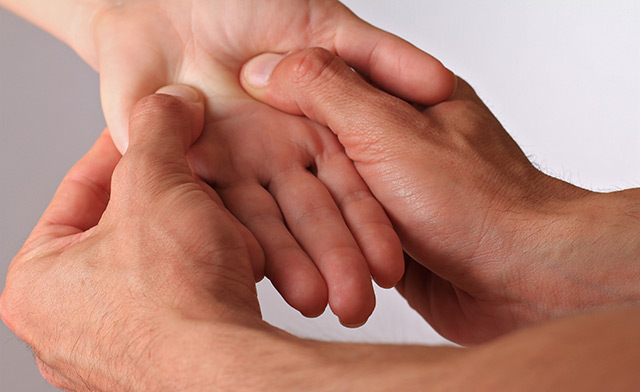Acupressure can heal stress fractures
11/14/2018 / By Edsel Cook

Acupressure is often touted as a means of relieving pain caused by various ailments and injuries. But did you know that it can also help heal tiny fractures in bones? An article in Modern Reflexology covered how acupressure therapy could heal stress fractures.
Stress fractures are also called hairline fractures. They develop when bones can no longer produce new cells to repair the damage they receive every day.
They can be divided into two groups. Fatigue fractures are caused by unnatural pressure placed on elastic bone, while insufficiency fractures result when a mineral-deficient bone gets severely stressed.
High-impact sports, dancing, and sudden bursts of intense activity can cause fatigue fractures. Menopause might be responsible for insufficiency fractures because it decreases bone mass.
Stress fractures become more common as a person grows older. Their tiny size makes them very hard to detect.
Symptoms are a gradually increasing sense of pain that deceptively decreases when the injured part is at rest, swelling around the area of the fracture, and constant pain following a bout of sustained trauma. Patients are generally prescribed painkillers to manage the pain while waiting for the microfracture to heal. (Related: Using acupressure to remedy a stuffy nose.)
Acupressure can relieve the pain caused by stress fractures
Acupressure can be considered a needle-free version of acupuncture. It believes that ailments are caused by the disruption of the natural energy that courses through the body.
To remove these disruptions, acupressure therapists apply gentle, steady pressure upon meridian points on very specific parts of the body. Stimulating these points unclogs them and allows bottled-up energy to flow smoothly once more. Once the body recovers its natural state of balance, it will heal faster and better.

Acupressure is used to treat asthma, arthritis, hypertension, rheumatoid arthritis, spondylosis, and other maladies. It also relieves stress, improves sleep, and enables deep relaxation.
It is highly recommended for patients with hairline fractures. It can simultaneously manage the pain of the fracture while slowly healing the injured muscles and tissue.
As long as the bone is still connected together and not completely broken up, it can still heal its injury. Acupressure therapy encourages that natural self-repair by ensuring the muscles in the area receive the blood they need.
Remember these useful meridian points for acupressure
The first step is to find your stress fracture. Seek out the symptoms or have yourself checked by a health service provider.
Once you have figured out its location, you will need to apply pressure to the meridian points associated with it for a few minutes. Repeat these brief sessions several times each day for six to eight weeks.
The L11 (Large Intestine) point is nowhere near your gut. It is found at one side of the elbow in the exterior part of the arm. Stimulating it will help heal simple fractures.
The TW14 (Triple Warmer 14) is located on your shoulder bone. Use your thumbs to press down on these spots.
The LU9 (Lung 9) is on the crease of skin at the wrist that is lined up with the thumb. If your stress fracture is near your arm, activating this point can help.
The TW15 (Triple Warmer 15) covers a region from the tip of the ring finger onward to the wrist. Triggering this area is said to be very effective in reducing pain and healing microfractures.
The SP6, SP7, and SP8 points are a cluster of meridian points found on the tibia. Apply mild pressure on them.
You can bolster the effectiveness of acupressure by consuming more calcium and vitamin D. You should also avoid activities that put stress on your injured bone.
More tips about acupressure can be found at HealingArts.news.
Sources include:
Submit a correction >>
Tagged Under:
acupressure, acupressure points, alternative treatments, bone fractures, Natural Treatments, pain relief, stress fractures, traditional Chinese medicine
This article may contain statements that reflect the opinion of the author





















